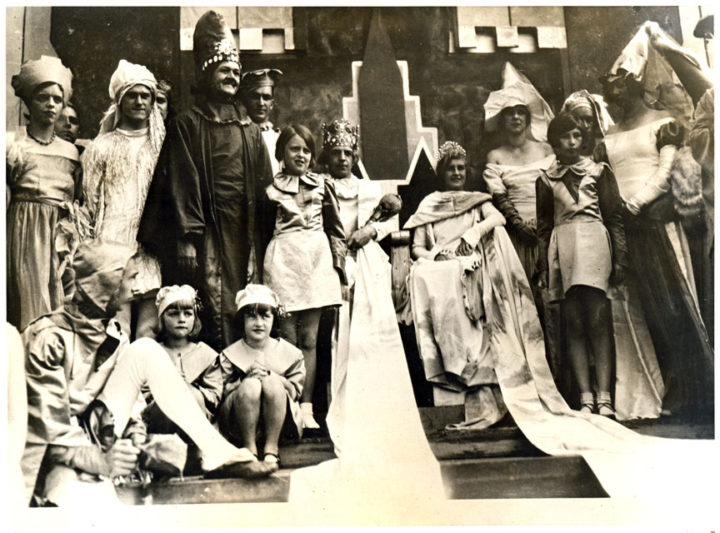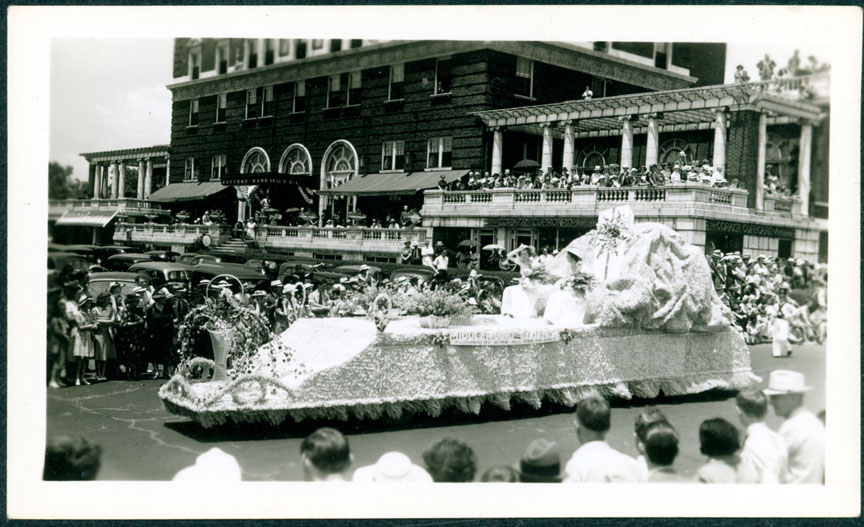In January 1928, plans were underway for Asheville’s inaugural Rhododendron Festival. Scheduled to take place in June, the weeklong gathering — which would feature rhododendron tours, a folk music and dance festival, sporting events, pageants, a float parade and the coronation of a Rhododendron Festival king and queen — promised to attract a large number of visitors.
“We have never had as many visitors in spring and early summer as we should have,” declared the Jan. 8, edition of The Sunday Citizen. “[T]he only reason for this is that only a limited number of people know how beautiful the mountains are at these seasons. If we can only bring enough of them here for the Rhododendron Festival it will only be a matter of time until May and June will see the mountains literally thronged with tourists.”
To help ensure a large turnout, members of the Asheville-Western North Carolina Hotel Men’s Association agreed to reduce room rates by 25 percent during festival week. Meanwhile, F. Roger Miller, manager of the Chamber of Commerce, facilitated a similar deal with W.H. Howard, president of the Southeastern Passenger Association. On March 1, 1928, The Asheville Citizen reported that come June, Howard would reduce rates for all riders coming to Asheville on railroads “south of the Ohio and Potomac rivers and east of the Mississippi river.”
Overwhelming support, however, did not preclude concerns. On Jan. 23, 1928, The Asheville Citizen reminded readers that failure was not an option. The Rhododendron Festival had to be “a tremendous thing,” it declared, adding: “A mediocre affair of this sort would injure the city’s prestige and do our people more harm than good.”
Among of the paper’s greatest worries was the location for the king and queen’s coronation. The newspaper insisted that the event should take place outdoors to allow the greatest number of visitors the chance to witness the spectacle. An indoor, ticketed gathering would be a dire mistake, the paper warned, writing: “[T]he impression would probably get abroad, whether it were true or not, that admission was secured by ‘pull’ or influence.”
The festival’s chairman, John A. Goode, initially agreed. On Jan. 25, he responded to the paper’s concerns, stating his belief that Pack Square would be the ideal location for the coronation. But he insisted an indoor alternative was imperative in case of bad weather. (The event would ultimately take place inside the Grove Park Inn without any suggestion of protest or criticism by the paper.)
Of greater worry for Goode was the city’s lack of rhododendron. “Although Asheville is situated in the very heart of the rhododendron country, very few of these shrubs have been planted on public or private grounds,” he wrote. “If shrubs are obtained at proper attitudes and transplanted before spring, a great number will be blooming in the city proper when the Festival occurs. This can only be accomplished through the active interest of individual citizens.”

By April, city, county and state officials were in full swing, promoting and preparing for the upcoming events. The paper reported that Gov. Angus McLean invited President Calvin Coolidge and Vice President Charles Dawes to the festival (neither attended). Meanwhile, Goode implored “all of the wandering sons and daughters of Buncombe County … to come home and join in a great family reunion[.]”
On June 4, an estimated 15,000 to 20,000 residents and tourists lined the downtown streets to witness the festival’s floral parade. Later that evening at the Grove Park Inn, Mayor Gallatin Roberts crowned Bingham McKee and Rose Corrigan the Rhododendron Festival king and queen.
According to the June 5 edition of The Asheville Citizen, the coronation “[tore] a page out of the books of Chivalry … calling down memories of ages when knights errant and ladies in emerald and flashing jewels made merry in the halls of Arthur[.]”
On June 9, the inaugural Rhododendron Festival came to an end. In that day’s paper, The Asheville Citizen wrote:
“The Rhododendron Festival this year could hardly have been held under more inauspicious weather conditions, for during the greater part of the week it has been rainy and chilly, and the season for the flowers had been unusually late. But the success of the Festival in spite of these handicaps only proves how great its possibilities are.”
The festival continued for the next 14 years, holding its final events in June 1942.
Editor’s note: Peculiarities of spelling and grammar are preserved from the original documents.




Before you comment
The comments section is here to provide a platform for civil dialogue on the issues we face together as a local community. Xpress is committed to offering this platform for all voices, but when the tone of the discussion gets nasty or strays off topic, we believe many people choose not to participate. Xpress editors are determined to moderate comments to ensure a constructive interchange is maintained. All comments judged not to be in keeping with the spirit of civil discourse will be removed and repeat violators will be banned. See here for our terms of service. Thank you for being part of this effort to promote respectful discussion.